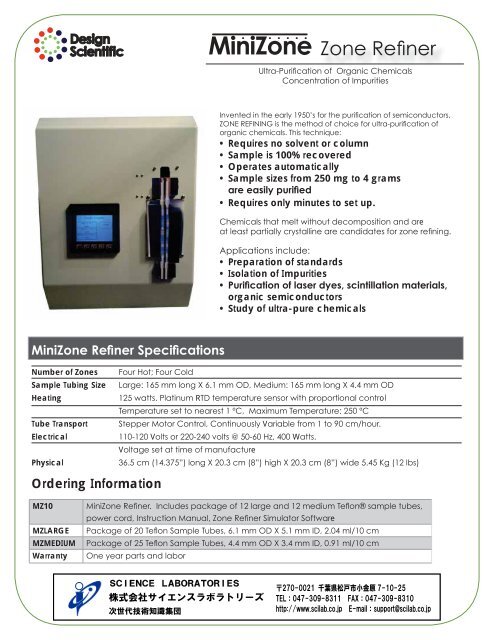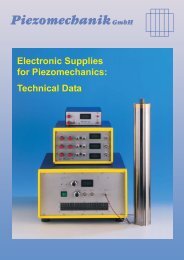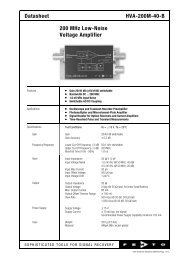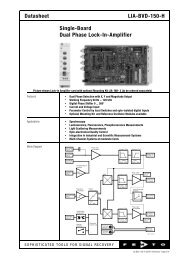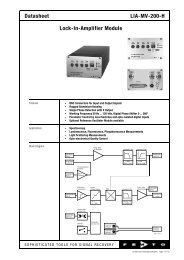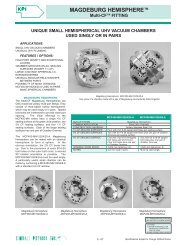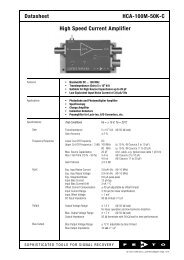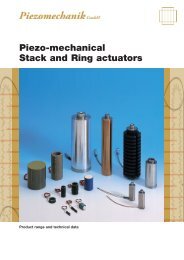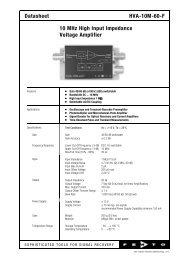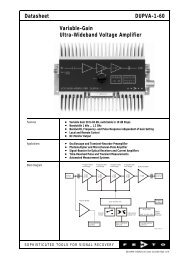Zone Refiner - ãµã¤ã¨ã³ã¹ã©ãã©ããªã¼ãº
Zone Refiner - ãµã¤ã¨ã³ã¹ã©ãã©ããªã¼ãº
Zone Refiner - ãµã¤ã¨ã³ã¹ã©ãã©ããªã¼ãº
You also want an ePaper? Increase the reach of your titles
YUMPU automatically turns print PDFs into web optimized ePapers that Google loves.
• Requires no solvent or column• Sample is 100% recovered• Operates automatically• Sample sizes from 250 mg to 4 grams• Requires only minutes to set up.e• Preparation of standards• Isolation of Impurities• organic semiconductors• Study of ultra-pure chemicalsNumber of <strong>Zone</strong>sSample Tubing SizeHeatingTube TransportElectricalPhysicalRolVVWVeOrdering InformationMZ10 $5,980eMZLARGE $ 30MZMEDIUM $ 30Warranty SCIENCE LABORATORIES〒270-0021 千 葉 県 松 戸 市 小 金 原 7-10-25(800) 572 - 6653 株 • 式 Fax: 会 (616) 社 サイエンスラボラトリーズ396 - 7520 • 590 East 32nd Street, TEL:047-309-8311 Holland, MI 49423 • FAX:047-309-8310info@resolutionsys.com次 世 代 技 術 知 識 集 団http://www.scilab.co.jp E-mail:support@scilab.co.jpwww.resolutionsys.com
<strong>Zone</strong> <strong>Refiner</strong>Ultra-Purification of Organic ChemicalsConcentration of ImpuritiesIn <strong>Zone</strong> Refining, a short molten zone travels slowlythrough an elongated sample of a crystalline material.A molten zone traversing a solid sample has twoliquid-solidinterfaces;a meltinginterface anda freezinginterface.At the meltinginterface thecompositionsample of a crystalline material. A molten zone traversinga solid sample has two liquid-solid interfaces;a melting interface and a freezing interface. At themelting interface the composition does not changebut at the freezing interface, the impurities favor theliquid phase because the crystal structure tends toexclude molecules that do not readily fit into thecrystal lattice. Passing the molten zone(s) through thesample many times concentrates the impurities at oneend leaving the opposite end highly purified.Free <strong>Zone</strong> <strong>Refiner</strong>Simulator SoftwareExplains the theory of zonerefining and displayshow the sample is purified.E-mail info@resolutionsys.comto request your free copy.The photo shows asample during therefinement processin the Mini<strong>Zone</strong> refiner.The sample iscontained in one (ortwo) disposable, thinwalledTeflon® sampletubes. These tubes arefilled with the sampleand clamped oneach end in the tubetransport mechanism.(The metal blocks atthe top and bottomof the photo.) Thetransport mechanismslowly moves the tubesdownward, passingthem through thefour heating and fourcooling zones of thetemperature regulatedmetal blocks. After thetubes move downwardthe distance of one hotzone and one cold zone (two centimeters), the transportmechanism is reversed and the tubes are quicklymoved upward to the original position. The net resultof this motion is that the molten and crystalline zonesmigrate slowly and continuously upward with respectto the tubing.With a typical zone rate of 2 cm/hr and with four activezones, each portion of the sample is subjectedto one purifying phase transitions per hour. Usuallywithin 18 hours of automatic operation (18 recrystallizations),the sample is purified. After the sample tubeis cooled, it is removed from the Mini<strong>Zone</strong>. The refinedsample is easily recovered by cutting the tube intosections. The major portion of the impurities are concentratedat one end of the tube.For more information on zone refining, please visitour web site at www.resolutionsys.com.


